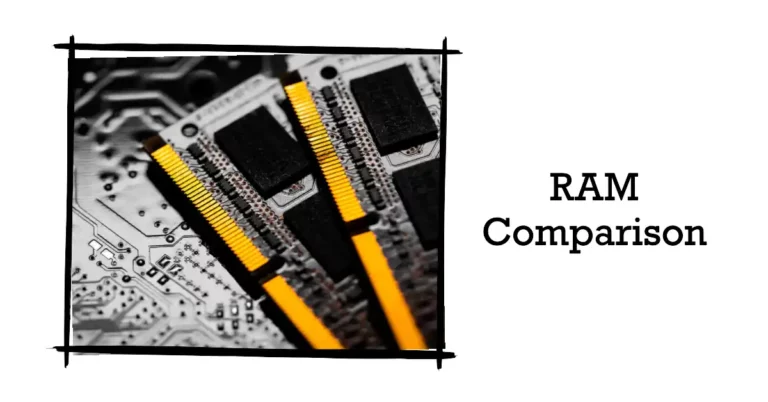Does RAM Affect Crypto Mining?
Yes, RAM, or random access memory, can affect cryptocurrency mining because it allows a computer to store and access large amounts of data more quickly, improving the efficiency of the mining process and potentially increasing the amount of cryptocurrency that is mined. However, other factors such as the processing power of the CPU and the type of GPU can also play a role in cryptocurrency mining.
How RAM Affects Cryptocurrency Mining?
RAM is an integral part of cryptocurrency mining. RAM is used to store data that miners need to access quickly while they are working on a block. This data includes things like the block header and transactions that need to be verified. Without enough RAM, the miner will not be able to work on blocks efficiently, which can affect their mining rewards.
In order to determine how much RAM is necessary for successful cryptocurrency mining, miners must consider the type of hardware being used and the size of each block they are attempting to mine. Generally speaking, more RAM is better since it allows the miner to access data faster. Additionally, higher-end graphics cards require larger amounts of RAM in order to process the graphics needed for mining.
Aside from hardware, miners must also be aware of the type of cryptocurrency they are attempting to mine. Some cryptocurrencies require more RAM than others in order to successfully mine blocks. For example, Litecoin requires less RAM than Ethereum due to its smaller block sizes. As such, miners may need to adjust their mining hardware accordingly depending on the type of cryptocurrency they want to mine.
So, there is no doubt RAM plays an important role in determining how successful a miner is when attempting to mine cryptocurrencies. The amount and type of RAM needed will depend on the type of hardware being used and the size of blocks that are being mined. By taking all of these factors into consideration, miners can ensure that their mining setup is optimized for maximum rewards.
What Affect Cryptocurrency Mining?
Cryptocurrency mining is an intensive process that requires a lot of energy and computing power. As such, the hardware used for cryptocurrency mining can affect the efficiency of the process. In particular, the amount of RAM available to your system affects how quickly you can mine cryptocurrencies.
The more RAM a system has, the more calculations it can perform in a single cycle and the faster it will be able to mine cryptocurrencies. If a system has too little RAM, it won’t be able to process as many calculations and therefore won’t be as effective when mining cryptocurrency.
However, having more RAM doesn’t necessarily guarantee better performance in cryptocurrency mining. The overall speed of your system, its power efficiency and the type of graphics card also play a role in determining how quickly you can mine cryptocurrency.
For instance, some graphics cards are better suited to mining certain types of cryptocurrencies than others. As such, it’s important to consider all the components that go into building a mining rig before investing in RAM for cryptocurrency mining.
The type of RAM you use can make a big difference when it comes to mining cryptocurrencies. For example, DDR3 RAM is cheaper than DDR4 but will not be as powerful or efficient when performing calculations related to mining cryptocurrency.
Ultimately, the amount of RAM you need for cryptocurrency mining depends on the type of cryptocurrencies you want to mine and the power of your system. As such, it’s important to take all these factors into account when deciding how much RAM you need for effective cryptocurrency mining.
Finally, it’s worth noting that RAM does not have a direct effect on how quickly or efficiently you can mine cryptocurrency. Instead, RAM helps improve the overall speed and efficiency of your system which in turn results in faster and more efficient mining.
Is 4GB RAM Enough for Mining?
Ultimately it depends on your goals as a miner and what operating system you choose to run. In most instances, 8GB is the better choice for Windows 10 while 4GB or 2GB will suffice with Linux based mining based depending on how much risk you want to take when mining. That being said, RAM usage can vary from rig to rig so make sure to gauge your needs before investing in RAM upgrades.
In my honest opinion, I suggest getting the 8GB RAM over 4GB when it comes to Windows 10 for an array of important reasons. Primarily, if you opt for skimping on your RAM then you could be faced with severe lag that can make your operating system run at a snail’s pace.
Assume you’ve installed 4GB RAM on your Windows 10 rig, and open MSI Afterburner while it’s mining Ethereum. Due to all of the background processes competing for resources – maxing out the RAM we have currently – the program may seem sluggish or take longer than expected to launch.
Even though some miners may think this is a small issue, it can be extremely time-consuming when managing multiple rigs, especially when overclocking and different mining software is being used.
When it comes to Linux-based mining operating systems, 2 to 4GB appears to be optimal, but again, I recommend 4 GB.
To sum it up, if you wish to save costs you need to use 8GB on Windows 10 and 4GB on Linux, and if you wish to risk it, you should use 4GB on Windows 10 and 2GB on Linux.
DDR3 or DDR4 for Mining: Which One to Start?
I think the best choice for mining is DDR4, as it offers more performance and efficiency when compared to the DDR3. It also has better latency and power consumption. The main disadvantage of DDR4 is that you will need a different motherboard than your current one if you’re running an older version of hardware. However, if you have the budget, then it’s worth upgrading to get a faster, more reliable system with higher hashrates.
The amount of RAM in your rig really does not affect the hashing performance directly but does play a role in how well your rig performs overall. Having enough RAM can help reduce errors and improve stability so that your miner can run without any hiccups or crashes.
While DDR4 is a popular memory option, it can become out of stock at unexpected times, so having alternatives such as DDR3 is a good idea since some of the older motherboards that are still used for mining can accommodate DDR3.
Does the CPU affect GPU mining?
With GPU mining, a Celeron or Pentium processor is Sufficient. However, if the miner wants to mine with both CPU and GPU simultaneously, then there may be issues with low-end CPUs. So, it may be beneficial to upgrade the CPU for better performance.
The main thing to consider is that the system should have a high clock speed, as this helps improve efficiency and hashrate. Other than that, you should select a processor with the highest number of cores and threads available in your budget range. This way, you’ll get maximum mining performance.
Does Overclocking Improve Mining?
Absolutely, overclocking can enhance the mining efficiency of your computer’s hardware. However, it is important to keep in mind that this process voids any warranties provided by the manufacturer for which you purchased these items.
Also, if you overclock too much, then it can damage the hardware and ultimately result in decreased mining performance.
The best way to get the most out of your mining rig is to experiment with different clock speeds and find the optimal settings for your computer. It’s a good idea to stress test any overclocking settings before putting them into practice, as this can help you avoid any potential damage to the hardware. Additionally, make sure to keep your computer in a well-ventilated area, as overheating can be another issue.


